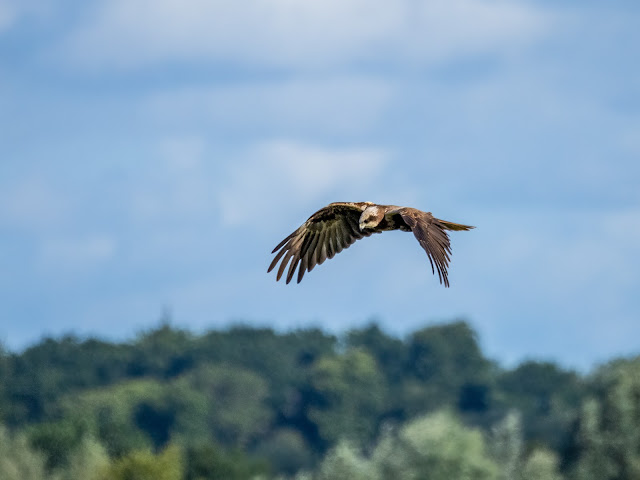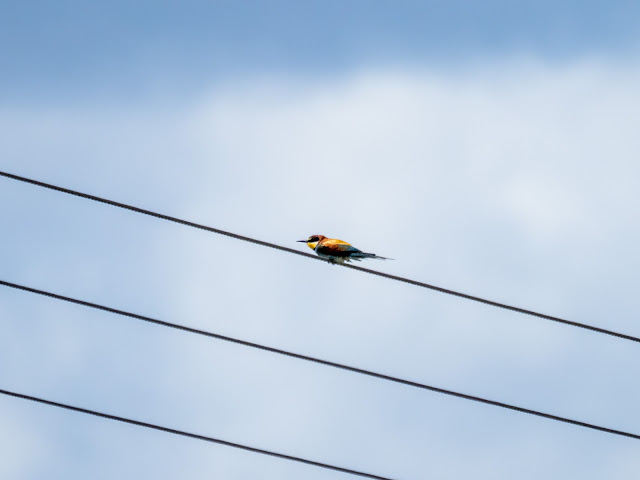On 26th June 2022, I visited RSPB Strumpshaw Fen and Trimingham in Norfolk.
RSPB Strumpshaw Fen is part of the Mid-Yare Valley along with Surlingham, Rockland, Buckenham and Cantley in the Norfolk Broads. The valley protects a mosaic of wetland habitats which is home to a wide range of important species.
RSPB Strumpshaw Fen has the designations Site of Special Scientific Interest , Special Protection Area and Special Area of Conservation. It has the full range of broadland habitats including reedbeds, wet woodlands, wet grasslands, ponds and ditches and orchid-rich meadows.
Photo: RSPB Strumpshaw Fen
Photo: RSPB Strumpshaw Fen
Photo: RSPB Strumpshaw Fen
This was my third visit to RSPB Strumpshaw Fen this year and I spent 5.5 hours at the reserve. The highlights, amongst 35 species recorded during my visit, were as follows (heard only records in italics): Bittern (1 .... presumably the same individual flew past the hide on 4 separate occasions), Bearded Tit (c.5 plus several others heard), Kingfisher (1), Marsh Harrier (1 male and 2 females), Reed Warbler (c.5 plus several others heard), Sedge Warbler (1 singing male and another heard), Cetti’s Warbler (1 singing male), Reed Bunting (1 singing male and another heard), Blackcap (at least 5 singing males), Chiffchaff (at least 5 singing males), Willow Warbler (1 singing male), Swallow (1), Swift (c.20), Grey Heron (1), Lapwing (1), Common Tern (4), Tufted Duck (2), Mallard (c.30), Mute Swan (4), Coot (4 plus juveniles), Cormorant (2), Great Spotted Woodpecker (1), Treecreeper (1), Stock Dove (1 calling male)
Addition to my 2022 year list: Bittern
In addition, I also recorded 7 species of butterflies: Meadow Brown (c.20), Small Tortoiseshell (c.10), Red Admiral (5), Small White (c.5), Large Skipper (2), Ringlet (1), Speckled Wood (1)
.... and 5 or 6 species of dragonflies and damselflies: Azure Damselfly and/or Common Blue Damselfly (c.50), Blue-tailed Damselfly (c.10), Black-tailed Skimmer (c.20), Four-spotted Chaser (3), Ruddy Darter (1 male)
…. and 3 mammal species: Reeve’s Muntjac (2), Rabbit (1), Grey Squirrel (1)
Unfortunately, I failed to see either of the 2 broadland specialists, namely Swallowtail and Norfolk Hawker
BirdGuides - Bee-eaters nest in Norfolk for first time
📣 🌈Special announcement 📣🌈
— RSPB Birders (@RSPBbirders) June 16, 2022
Prrp! Prrp! Bee-eaters are nesting in Norfolk! There are seven birds currently at a quarry in Trimingham. Great views from the viewing site! Car parking is £5. See you there!
📹 (Footage by Mike Edgecombe)@BBCSpringwatch pic.twitter.com/B6NXKoi1eA
I have seen European Bee-eaters on numerous occasions in several European
countries, sometimes in quite large numbers at their breeding colonies, but I
have only seen this species on a single occasion in the UK, a breeding pair at
Bishop Middleham Quarry in County Durham in August 2002. Therefore, a visit to
see the birds at Trimingham was definitely part of my planned itinerary.
The European Bee-eater breeds in southern and central Europe, northern and southern Africa and western Asia. Except for the resident southern African population, the species is strongly migratory and winters in tropical Africa. It occurs as a spring overshoot north of its usual range with occasional breeding in northern Europe including the UK.
The RSPB volunteers were very organised in terms of arranging the car parking, giving directions to the viewpoint and providing an update on the birds.
During my visit, I saw up to 4 European Bee-eaters either in flight or perched on telegraph wires or in bushes. The views were very distant (understandably to avoid disturbance to such a rare breeding bird), exceptional through my telescope but challenging for photography. However, I did get some heavily cropped record photos ….
Here are some photos of European Bee-eaters that I took from a hide in northern Bulgaria in 2018 ….


















































